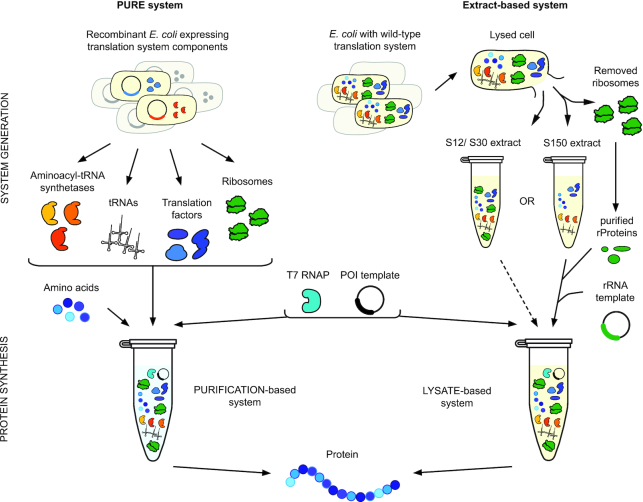Figure 2.
In vitro protein synthesis systems facilitate translation system engineering. Two strategies exist for enabling protein translation in vitro: the PURE system and extract-based systems. In the PURE system (left), each unique component of the translation apparatus is individually purified from cells, including the aminoacyl-tRNA synthetases, tRNAs, translation factors, and ribosomes. In order to reconstitute a functional translation system, these components are then recombined together with amino acids, energy substrates, cofactors, salts, a template for a protein of interest (POI), and T7 RNA polymerase (RNAP) to generate mRNA template. Importantly, this methodology enables precise optimization of component concentrations and the ability to leave out certain components and replace them with modified components to modulate translation apparatus function. In contrast, extract-based systems (right) entail a simpler protocol for the preparation of a crude cellular extract containing all the necessary components.

